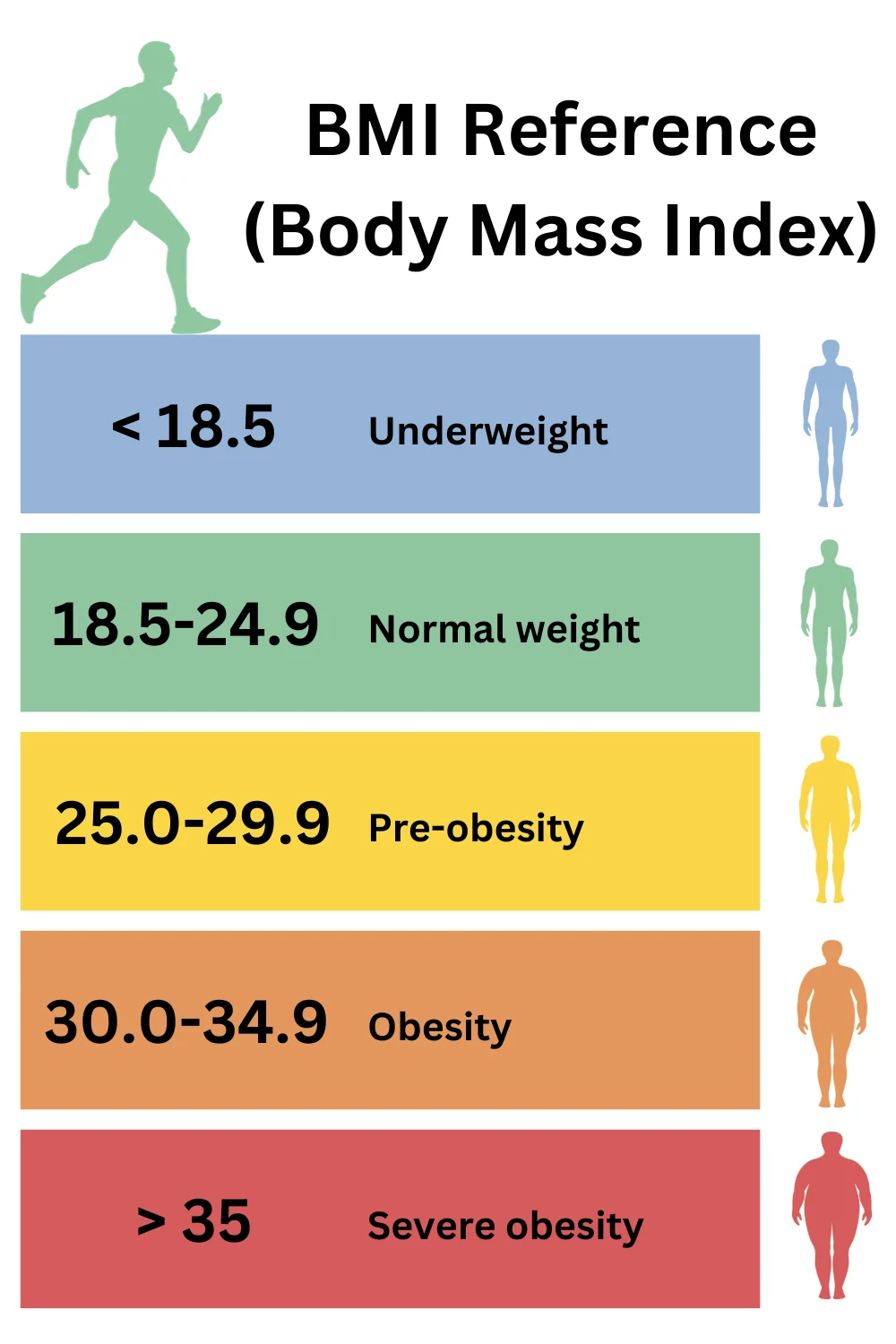Links marked with * — Partner products have been carefully selected by Gym Geek. When you purchase a product through one of these links, we may earn an affiliate commission. As an Amazon Associate we earn from qualifying purchases.
![]()
Most Popular Calculators
Calculators to try next:
The ideal body weight calculator (reverse BMI calculator) is a tool that calculates your target weight for a given BMI (Body Mass Index). If you are planning to lose or gain weight, you can use this calculator to target a specific BMI range (i.e. normal, overweight or obese ranges). If you are currently overweight, the tool will produce the exact weight you need to hit to get back into the normal range.
What is BMI (Body Mass Index)?
BMI stands for “Body Mass Index“. It is a widely used method to assess whether a person has a healthy body weight. It is a simple calculation based on your weight and height. You can use the number produced by this calculation to compare your personal BMI against the standard reference ranges used by healthcare professionals.
The World Health Organization (WHO) categorize BMI using the following ranges:
- Below 18.5 - Underweight
- Between 18.5 and 24.9 - Normal weight
- Between 25.0 and 29.9 - Pre-obesity (overweight)
- Between 30.0 and 34.9 - Obesity class I
- Between 35.0 and 39.9 - Obesity class II
- Above 40 - Obesity class III

What is the ideal body weight calculator?
Most BMI calculators work by taking your height and weight, and producing your BMI. For example, you might calculate your BMI as 27 and understand you are in the pre-obesity (overweight) range. This is a good way to understand whether you currently have a healthy weight. But, how do you know what weight to target to move yourself into a different BMI range?
Gym Geek's ideal body weight calculator performs the BMI calculation in a reverse order. Rather than outputting your BMI given your current weight, it outputs a target weight given your desired BMI. This tool can help you set a realistic weight loss (or gain) goal.
How is reverse BMI calculated?
Body Mass Index (BMI) is a measure you can use to determine whether you have a healthy body weight. The formula for calculating BMI is:
BMI = Weight (kg) / [Height (m)]^2
Reverse BMI, on the other hand, is used to estimate the weight you would need to target to achieve a specific BMI. The formula for reverse BMI is:
Weight (kg) = BMI * [Height (m)]^2
This is useful for setting weight loss or weight gain goals. Remember, these calculations are general estimates and may not be accurate for everyone. Always consult your doctor or a health professional for personalized advice.
How to use the ideal body weight calculator
First, you need to input your height. You can enter this in centimeters (cm) or feet (ft) and inches (in).
Next, input your target Body Mass Index (BMI). Select a target BMI that aligns with your weight goals. For example, if your goal is to achieve a weight within the normal range, you would target a BMI of 24.9 or less. Our calculator provides the standard reference ranges for BMI, so you can easily click between each range.
Click the 'Calculate' button. Our calculator will output your target ideal weight based on the desired BMI you've set. All results are outputted in kilograms (kg), pounds (lbs), and stones and pounds (British imperial units).
Limitations of BMI
The primary limitation of using BMI as a healthy weight indicator is that it does not take into account your body's fat content. BMI is calculated using only your weight and height, but it doesn't differentiate between weight from muscle and weight from fat.
If you have a high muscle mass, you may have a high BMI and be categorized as overweight or obese. Athletes and individuals who participate in strength training or other sports that contribute to muscle growth often have higher BMIs.
While BMI can be a useful tool, it should be used in conjunction with other methods when evaluating the state of your overall health and fitness.
Despite its limitations, BMI is a useful measure for the majority of people. BMI can provide a reasonably accurate assessment of whether you are underweight, normal weight, overweight or obese. It is an accessible and easy-to-understand measurement that can be a starting point for deeper conversations about your health, diet, and exercise.
References
World Health Organization. (2010). A healthy lifestyle - WHO recommendations. World Health Organisation. https://www.who.int/europe/news-room/fact-sheets/item/a-healthy-lifestyle---who-recommendations
Jonnalagadda, S. S., Skinner, R., & Moore, L. (2004). Overweight athlete: fact or fiction?. Current sports medicine reports, 3(4), 198-205.


